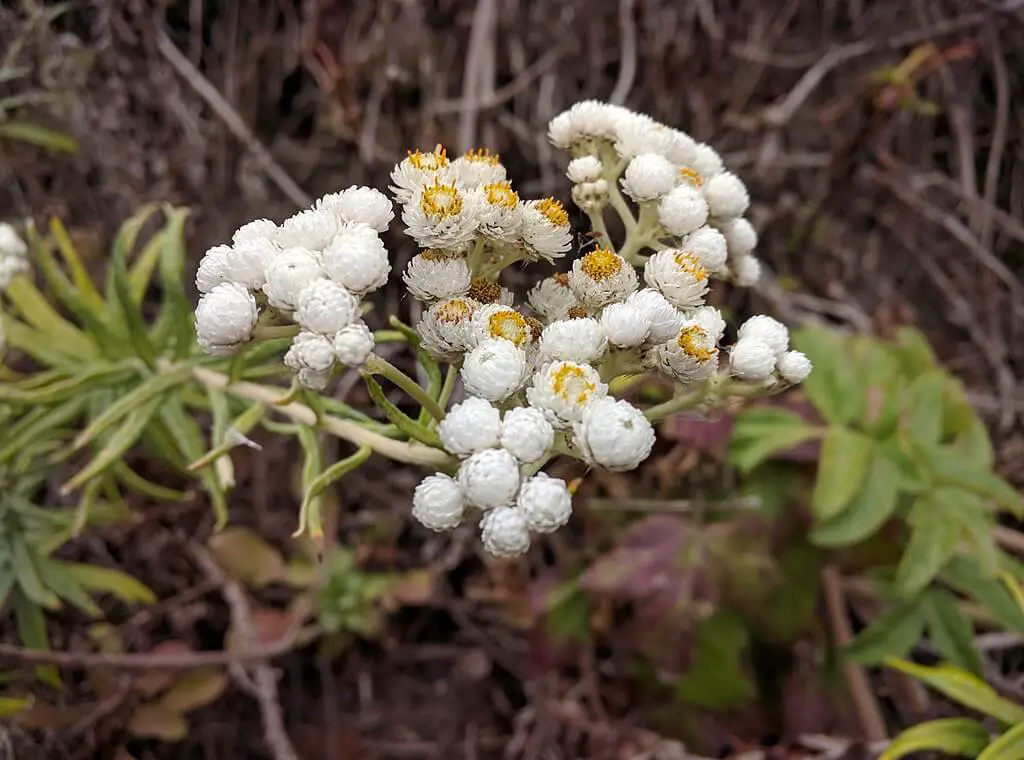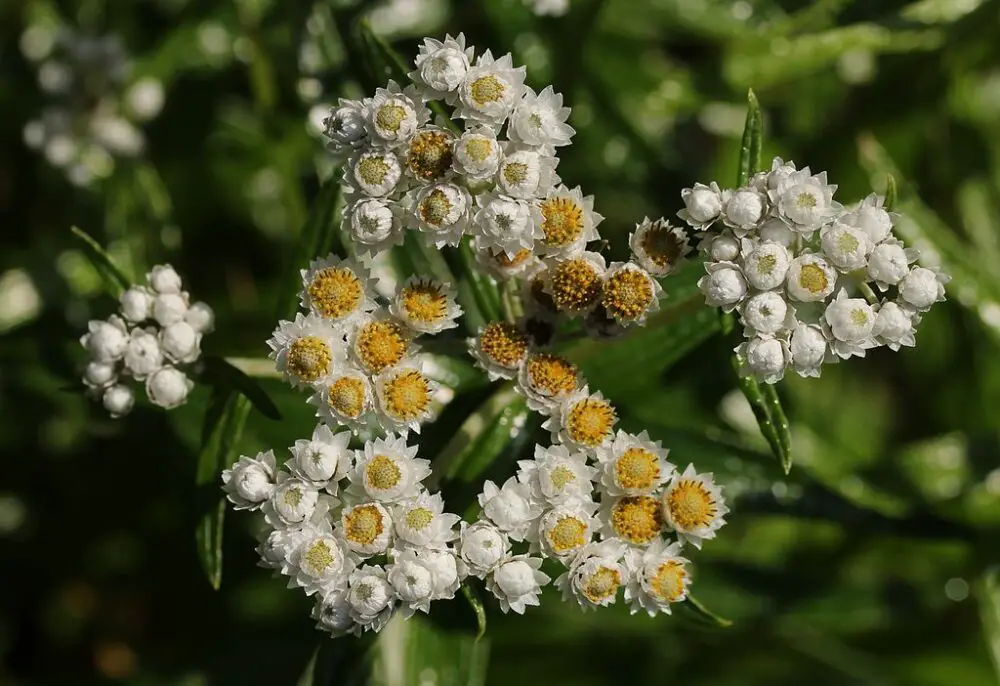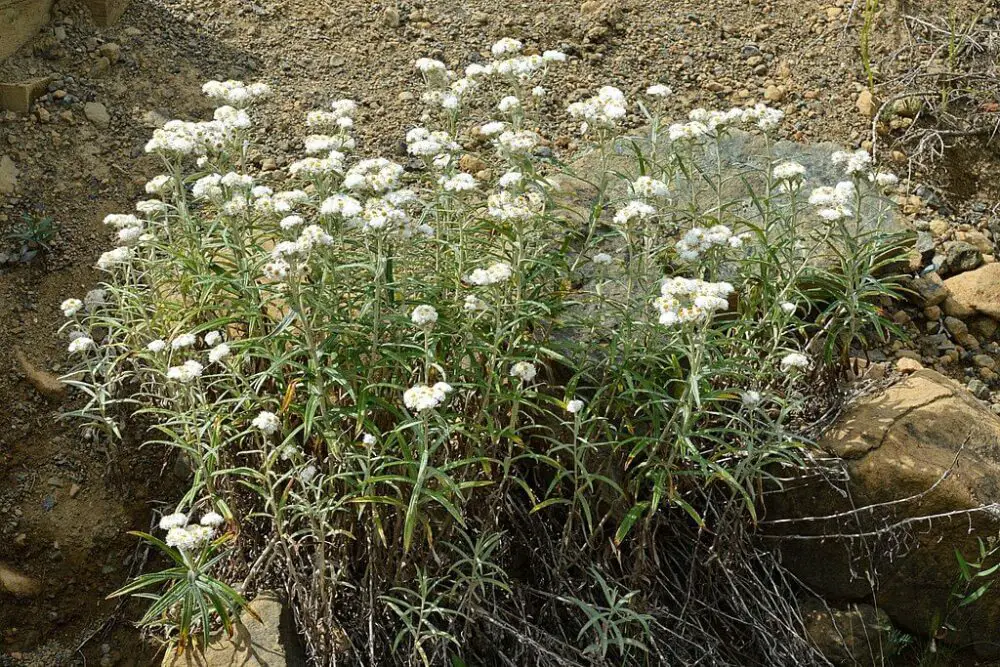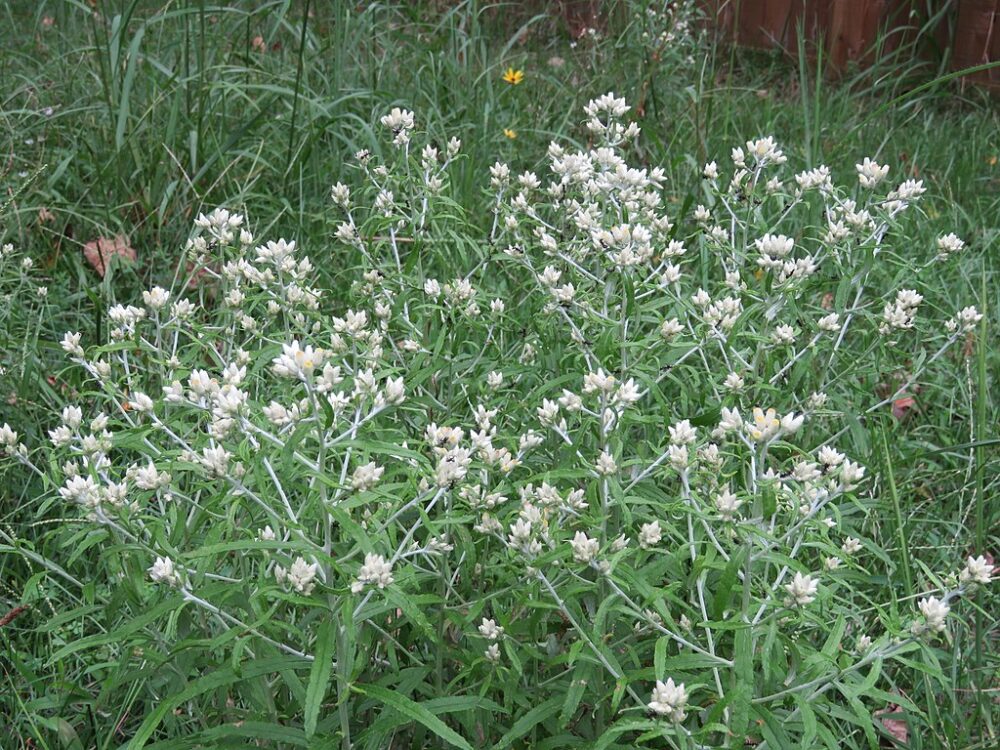The North American pearly everlasting is an underrated herbaceous perennial. It’s a great plant that is easy to take care of. While it is commonly used in floral arrangements today, it was also used medicinally in the past. Most people say it is not edible, but others say the leaves can be cooked like any other leafy green.
Plant Profile
The scientific name, Anaphalis margaritacea, is taken from the original Greek name, which translates to “pearl-like.” It is from the Asteraceae, or sunflower, family.
There are only two common names for this plant:
- Pearly everlasting
- Western pearly everlasting
Humans love to look at it, and caterpillars love to eat it. Its staminate and pistillate flowers make it an excellent pollinator.
What Are You Foraging For Right Now?
We're thrilled to hear your ideas. What would you like to submit today? Feel free to share your thoughts and experiences with us.
It acts as a host plant to the caterpillars of the American lady butterfly (Vanessa virginiensis). The caterpillars create a web of silk around the plant as they feed.
In the spring, the pearly everlasting flowers are also often visited by the painted lady butterfly (Vanessa cardui) as a food source.

How to Identify Anaphalis Margaritacea?
The pearly everlasting wildflower grows between 1 and 3 feet tall. It has wooly, erect stems that are a soft gray color.
The alternating green leaves are oblong. The top of the leaf has very little, if any, hair. The underside of the leaf is wooly, similar to the stems, and has a whitish color.
Each panicle-shaped inflorescence has between two and five flower heads. The most common flower colors are white, silverish-gray, and goldish-yellow. Surrounding each flower head are pearly, blunt, overlapping bracts.
You’ll notice a musky, woody odor if you rub or squeeze the plant.
To the untrained eye, pearly everlasting looks similar to sweet everlasting. Sweet everlasting has an egg-shaped flower instead of a globe-shaped flower.
The inflorescence of sweet everlasting staggered, unlike the flat top of pearly everlasting.



Where Is Pearly Everlasting Native To?
You can find many types of Anaphalis in India and Asia. However, Anaphalis margaritacea is the only variety naturally found in North America.
This native plant can be found in almost every US state, especially in the Midwest. However, it does not grow naturally in the southeast.
More specifically, pearly everlasting plants tend to grow in disturbed soil, prairies, fields, and roadsides.
It usually grows in higher elevations.
How to Use Pearly Everlasting
Because of their unique appearance, pearly everlasting flowers make a great addition to bouquets. Additionally, they are a popular choice when creating dried flower arrangements. After the rest of the flower wilts, the bracts remain intact.
Anaphalis margaritacea is an easy-to-care-for addition to a garden. This herbaceous perennial doesn’t grow any higher than 3 feet and makes a great edging plant.
The plant can be used to create natural dyes. The flowers and stems can also be used as incense.
Native Americans used the plant in several different ways. The steam from the boiled plant was, and possibly can still be, used to:
- treat headaches
- help with rheumatism
- loosen mucus
- help with asthma
Supposedly, smoking the flower can help treat colds. Oddly enough, this plant was also used as a tobacco substitute.
Externally the plant has been known to treat wounds and sores and soften skin.
One important thing is that ingesting A. margaritacea has been known to reduce milk production in nursing mothers.
Is Pearly Everlasting Edible?
Most people say it is not edible, but others say the leaves can be cooked like any other leafy green.
The stems might also be edible, but their fuzziness is not very palatable.
Pearly Everlasting Growing Tips
This wildflower grows in USDA hardiness zones 3 to 8. It requires about 6 hours of full sun each day. The plant can also grow in part shade but might not grow as tall or bloom as impressively.
Pearly everlasting grows well in disturbed soil that is dry and has stones, sand, gravel, or clay. It tolerates frost and drought.
During a hot summer, the plant needs regular watering. Otherwise, the plant more or less takes care of itself. Unless you want it to spread rapidly, fertilizer is not necessary.
Anaphalis margaritacea blooms in the late summer, between June and September. It is not considered invasive, but the plant grows quickly in the right conditions.
It is best to propagate this plant by division. You can do this with cuttings or with seeds. If you do it with seeds, remember not to cover them with soil. They require direct sunlight to germinate.
Overall, it’s a great plant that is easy to take care of. This plant usually repels deer and rabbits, but bees, caterpillars, and painted lady butterflies will be common visitors.
Originally from Florida, but with a lust for travel, Sami has found herself in many remote areas with little-to-no access to traditional medicines. Since 2014, she has been experimenting with natural remedies, eastern medicine, and foraging. She believes that the Earth provides us with everything we need to live, heal, and cure.

